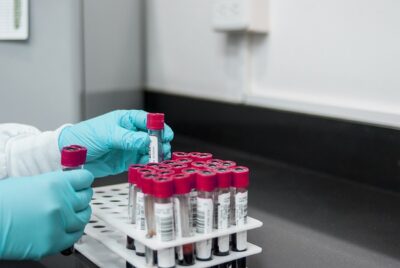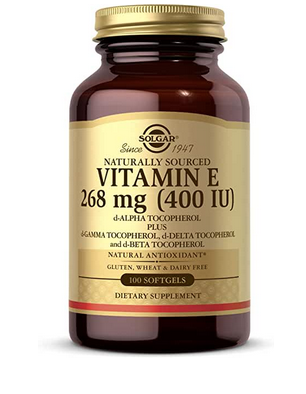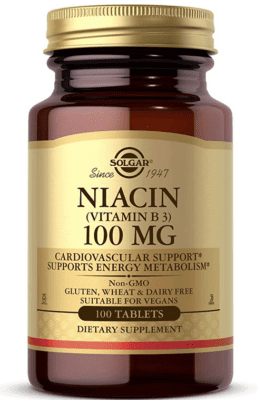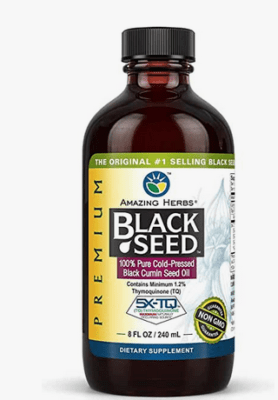by Tonya L. Breaux-Shropshire, PhD, DNP, FNP, MPH-Today I want to tell you about cholesterol, review what it is, how it affects our health, and how to lower it if you have high cholesterol, among other things.
Cholesterol is a fat-like substance that is present in the body and is essential for normal cell functioning. The liver produces it, and is also found in certain foods.
There are two types of cholesterol, LDL or “bad” cholesterol and HDL or “good” cholesterol. LDL cholesterol can increase the risk of heart disease and stroke. In contrast, HDL cholesterol helps to remove excess cholesterol from the bloodstream and transport it to the liver for processing and excretion.

What Are the Causes of High Cholesterol
One of the primary causes of high cholesterol is an unhealthy diet. Eating foods high in saturated and trans fats, added sugar and refined carbohydrates can increase cholesterol levels. COVID-19 infection, lack of physical activity, genetics, age, gender, obesity, medical conditions such as diabetes and hypothyroidism, and smoking are other contributing factors. Let’s take a deeper dive into what might be causing high cholesterol.

Cholesterol Testing
To determine high cholesterol, a blood test is necessary. It’s important to note that high cholesterol levels may not cause any symptoms. If you have high cholesterol, your doctor can work with you to develop a plan to lower your levels and reduce your risk of heart disease and stroke.
If your cholesterol levels are high, your healthcare provider may recommend repeating the blood test within a few weeks to confirm the results. Once treatment is initiated, the frequency of cholesterol testing may vary depending on the individual’s response to treatment and overall health status.
It is important to discuss with your healthcare provider how often you should check your cholesterol levels.
People with heart disease should check their cholesterol levels regularly, as often as recommended by their healthcare provider. This may depend on individual factors such as the severity of the heart disease, the effectiveness of the treatment plan, and other health conditions.
In general, it is recommended that people with heart disease get their cholesterol levels checked at least once a year, or more frequently if their healthcare provider recommends it.
It is recommended that all adults over the age of 20 have their cholesterol checked every 4-6 years as a part of a regular health check-up. The frequency of checking cholesterol levels depends on the individual’s risk factors and current cholesterol levels.
However, individuals with a higher risk of heart disease or those who have been diagnosed with high cholesterol should have their cholesterol levels checked more frequently, as recommended by their healthcare provider. It is important to follow the guidance of a healthcare provider regarding the frequency of cholesterol testing.
The cost of cholesterol and lipid tests at LabCorp may vary depending on the specific tests ordered and the location of the LabCorp facility. It is best to check directly with LabCorp or your healthcare provider for pricing information.
LabCorp may also accept different types of insurance, which may affect the out-of-pocket cost for the tests.

Cholesterol Normal Values
The normal values for total cholesterol, LDL, HDL, and triglycerides may vary depending on the guidelines used and the individual’s overall health status. However, here are the general recommended levels:
Total cholesterol: Less than 200 mg/dL (5.2 mmol/L)
LDL cholesterol: Less than 100 mg/dL (2.6 mmol/L)
HDL cholesterol: Greater than 40 mg/dL (1.0 mmol/L) for men, greater than 50 mg/dL (1.3 mmol/L) for women
Triglycerides: Less than 150 mg/dL (1.7 mmol/L). If you have very high triglycerides equal to or greater than 500 milligrams per deciliter (mg/dl), the American Heart Association (AHA) recommends Omega-3 fish oil treatment.
It’s important to note that these values are only general guidelines, and individual optimal levels may vary based on factors such as age, gender, and other health conditions.
It’s always best to consult with a healthcare provider to determine an appropriate target range for your cholesterol levels.

COVID-19 & High Cholesterol
Recently, a study published in The Lancet Diabetes & Endocrinology has found that COVID-19 survivors have a higher risk of developing dyslipidemia, which is a condition characterized by high cholesterol and triglycerides and low levels of HDL cholesterol.
The findings suggest that lipid-lowering medication should be continued during and after the active COVID-19 infection period to reduce the risk of developing cardiovascular disease.

Lack of Physical Activity & High Cholesterol
Lack of physical activity can contribute to high cholesterol levels in a few ways. When we engage in regular physical activity, it can help lower LDL (low-density lipoprotein) cholesterol levels, which is commonly referred to as “bad” cholesterol.
Exercise also helps raise HDL (high-density lipoprotein) cholesterol levels, which is referred to as “good” cholesterol. HDL cholesterol helps carry LDL cholesterol out of the bloodstream, which helps prevent cholesterol buildup in the arteries.
When we don’t engage in regular physical activity, our bodies may not produce enough HDL cholesterol to properly clear the LDL cholesterol from the bloodstream. Additionally, a sedentary lifestyle can contribute to weight gain and obesity, which are both risk factors for high cholesterol levels.
It’s also worth noting that regular physical activity can help improve overall heart health, which can reduce the risk of heart disease and stroke, both of which are associated with high cholesterol levels.

Hypothyroidism & High Cholesterol
Hypothyroidism is another medical condition that can cause high cholesterol levels. Thyroid hormones are essential in regulating the metabolism of fats in the body, including cholesterol.
When thyroid hormone levels are low, it can lead to an increase in LDL cholesterol levels. Treating hypothyroidism with thyroid hormone replacement therapy can help to restore normal thyroid hormone levels and improve cholesterol levels.
The main lab test used to diagnose and manage low thyroid function, also known as hypothyroidism, is the thyroid stimulating hormone (TSH) test. This test measures the amount of TSH in the blood, which is a hormone released by the pituitary gland that stimulates the thyroid gland to produce thyroid hormones.
In people with hypothyroidism, the TSH level is typically elevated, indicating that the pituitary gland is trying to stimulate the thyroid gland to produce more thyroid hormones.
In addition to the TSH test, healthcare providers may also order other thyroid function tests, such as free T4 (thyroxine) and free T3 (triiodothyronine), to help diagnose and manage hypothyroidism.
These tests measure the levels of the actual thyroid hormones in the blood, and can help determine if the thyroid gland is producing enough thyroid hormones to meet the body’s needs.
Other tests may also be ordered to help identify the underlying cause of hypothyroidism, such as thyroid peroxidase (TPO) antibodies to check for autoimmune thyroid disease.
The normal range for thyroid-stimulating hormone (TSH) in adults is typically between 0.4 and 4.0 milli-international units per liter (mIU/L).
However, the normal reference range may vary depending on the laboratory and the specific testing method used. The normal range for free thyroxine (free T4) is usually between 0.8 and 1.8 nanograms per deciliter (ng/dL).
Free triiodothyronine (free T3) has a normal range of 2.0 to 4.4 pg/mL. It is important to note that the normal ranges may vary depending on the laboratory and the testing method used, so it is always best to consult with a healthcare provider for interpretation of individual tests results.
Free T3 test can be useful in determining the treatment plan for a patient with abnormal thyroid function tests. In cases where the TSH is elevated and the free T4 is low, measuring the free T3 level can help distinguish between primary hypothyroidism (low T4 and T3) and secondary hypothyroidism (low T4 and normal or low T3).
Additionally, in cases of suspected hyperthyroidism, measuring the free T3 level can help confirm the diagnosis. The appropriate treatment plan would depend on the specific thyroid function test results and the patient’s clinical presentation, and should be determined by a healthcare professional.
Primary hypothyroidism and secondary hypothyroidism are two types of hypothyroidism that differ in the underlying cause of the condition.
Primary hypothyroidism is caused by a problem with the thyroid gland itself. In this case, the thyroid gland is not producing enough thyroid hormone, resulting in low levels of T4 and T3 in the blood.
Common causes of primary hypothyroidism include autoimmune diseases like Hashimoto’s thyroiditis, iodine deficiency, and surgical removal of the thyroid gland.
Secondary hypothyroidism, on the other hand, is caused by a problem with the pituitary gland or the hypothalamus. In this case, the pituitary gland is not producing enough thyroid-stimulating hormone (TSH), which signals the thyroid gland to produce T4 and T3.
As a result, the thyroid gland is not stimulated enough to produce adequate amounts of thyroid hormone. In secondary hypothyroidism, TSH levels are low or normal, while T4 and T3 levels are low. Common causes of secondary hypothyroidism include pituitary or hypothalamic tumors, head trauma, and radiation therapy.
The treatment for primary and secondary hypothyroidism is different. In primary hypothyroidism, the treatment involves replacing the missing thyroid hormone with synthetic thyroid hormone medication, usually in the form of levothyroxine.
In secondary hypothyroidism, the underlying cause must be identified and treated, possibly involving surgery, radiation, or medication.

Genetics & High Cholesterol
Genetics can play a role in causing high cholesterol levels. Some people inherit genetic mutations that affect how their body produces, metabolizes, and clears cholesterol from the bloodstream. For example, familial hypercholesterolemia (FH) is a genetic disorder that causes high levels of LDL cholesterol in the blood.
This condition is caused by mutations in the genes that code for the LDL receptor, which is responsible for removing LDL cholesterol from the blood.
In some cases, genetic mutations can also affect how the body metabolizes fat and cholesterol. For example, mutations in the ApoB gene can cause a condition known as familial defective ApoB, leading to high LDL cholesterol levels and an increased risk of heart disease.
However, it’s important to note that genetics is just one of many factors that can contribute to high cholesterol levels.
Even if someone has a genetic predisposition to high cholesterol, lifestyle changes such as improving diet, increasing physical activity, and taking medications, if necessary, can help manage cholesterol levels and reduce the risk of heart disease.

Aging & High Cholesterol
As people age, their cholesterol levels tend to increase, which can lead to high cholesterol. This is partly because the liver’s ability to remove LDL cholesterol from the blood can decrease with age, leading to a buildup of cholesterol in the bloodstream.
Additionally, as people age, they may become less active and gain weight, which can also contribute to higher cholesterol levels. Age-related changes in hormones, such as a decrease in estrogen levels in women after menopause, can also contribute to higher cholesterol levels.
Other age-related factors that can contribute to high cholesterol include changes in diet, increased inflammation, and oxidative stress.
All of these factors can cause damage to the walls of the blood vessels, leading to a buildup of cholesterol and other substances in the arteries.
While aging is a risk factor for high cholesterol, it’s important to note that lifestyle factors such as diet, exercise, and smoking status also play a significant role in cholesterol levels.
Making healthy lifestyle choices can help manage cholesterol levels and reduce the risk of heart disease, even as we age.
Vitamins & Cholesterol
The effects of vitamin E on cholesterol levels are still not clear and more research is needed to determine its effectiveness. Some studies have suggested that vitamin E may help reduce LDL (“bad”) cholesterol levels, while others have found no significant effect.
Additionally, high doses of vitamin E may have negative side effects, such as an increased risk of bleeding, so it is important to talk to a healthcare professional before taking any supplements.
The best way to lower cholesterol levels is through lifestyle changes, such as regular exercise, a healthy diet, and not smoking, in addition to any medication prescribed by a healthcare provider.
There is limited scientific evidence to suggest that specific vitamins can effectively lower cholesterol levels.
However, some studies suggest that certain vitamins and supplements may have a modest effect on cholesterol levels when used in combination with a healthy diet and lifestyle.
For example, niacin (vitamin B3) can increase HDL cholesterol levels (the “good” cholesterol) and lower triglycerides, although it may also cause unwanted side effects such as flushing and liver damage at high doses.
Plant sterols and stanols are another supplement that have been shown to lower LDL cholesterol levels, but they should not be used as a sole treatment for high cholesterol.
It’s important to note that dietary supplements should not be used as a substitute for prescribed cholesterol-lowering medications. If you have high cholesterol, it’s best to talk to your healthcare provider to determine the best course of treatment.
Black Seed Oil & Cholesterol
Black seed oil, also known as Nigella sativa oil, has been studied for its potential health benefits, including its effect on cholesterol levels. However, the evidence on the effectiveness of black seed oil in lowering cholesterol is limited and conflicting.
Some studies have suggested that black seed oil may have a positive effect on lipid levels, including reducing total cholesterol and LDL cholesterol. However, other studies have found no significant effect on cholesterol levels.
Overall, more research is needed to fully understand the potential effects of black seed oil on cholesterol and whether it can be an effective treatment for high cholesterol.
If you are considering taking black seed oil or any other supplement for cholesterol management, it is important to consult with your healthcare provider first.
Fruit & Cholesterol
Yes, apples contain soluble fiber called pectin which has been shown to help reduce LDL cholesterol levels. Pectin binds with bile acids in the digestive tract, leading to their excretion and therefore reducing cholesterol levels.
Additionally, apples are rich in antioxidants, which may also help to lower cholesterol levels. However, it’s important to note that apples should not be considered a sole treatment for high cholesterol, and a healthy diet and lifestyle, as well as any necessary medication, should be followed as recommended by a healthcare professional.
Several fruits have been shown to have cholesterol-lowering properties. Some examples include:
Berries: Berries such as strawberries, blueberries, blackberries, and raspberries contain compounds called polyphenols, which have been shown to help reduce LDL cholesterol levels.
Citrus fruits: Citrus fruits such as oranges, grapefruits, and lemons contain a soluble fiber called pectin that can help lower LDL cholesterol levels.
Avocado: Avocado is high in monounsaturated fats and fiber, which can help reduce LDL cholesterol levels and improve overall heart health.
Apples: Apples contain a type of soluble fiber called pectin, which has been shown to help lower LDL cholesterol levels.
Grapes: Grapes contain compounds called flavonoids, which have been shown to help reduce LDL cholesterol levels and improve overall heart health.
It’s important to note that while fruits can help lower cholesterol levels, they should be consumed as part of a balanced diet that includes other healthy foods and lifestyle changes.

Oils & Cholesterol
If you have high cholesterol, it is recommended to avoid oils that are high in saturated and trans fats. These oils include:
Coconut oil
Palm oil
Palm kernel oil
Butter
Lard
Beef tallow
Shortening
Margarine (stick form)
Instead, it is recommended to choose oils that are high in unsaturated fats, such as:
Olive oil
Canola oil
Avocado oil
Peanut oil
Sunflower oil
Sesame oil
Soybean oil
It is important to note that while these oils are healthier options, they should still be consumed in moderation as they are high in calories.
Coconut oil is a source of saturated fats, which are known to raise LDL (bad) cholesterol levels in the blood. Studies have shown that consuming coconut oil can increase both LDL and HDL (good) cholesterol levels, but the increase in LDL cholesterol is greater than that of HDL cholesterol.
This means that while coconut oil may have some health benefits, it is not a recommended oil for people with high cholesterol.
It is recommended to limit the intake of saturated fats, including those found in coconut oil, and instead opt for unsaturated fats like olive oil, avocado oil, or canola oil.

Candy & High Cholesterol
Candy is typically high in sugar, which can indirectly raise cholesterol levels in a few ways:
Weight gain: Consuming excessive amounts of sugary candy can lead to weight gain and obesity, which in turn can increase LDL (bad) cholesterol levels and decrease HDL (good) cholesterol levels.
Insulin resistance: High intake of sugary foods like candy can lead to insulin resistance, which means the body’s cells become less responsive to insulin. This can cause an increase in triglyceride levels and a decrease in HDL (good) cholesterol levels.
Inflammation: Eating too much sugar can lead to inflammation in the body, which is associated with higher levels of LDL (bad) cholesterol and lower levels of HDL (good) cholesterol.
Overall, it’s important to limit your intake of sugary foods like candy in order to maintain healthy cholesterol levels.

Lifestyle Changes to Lower Cholesterol
There are several lifestyle changes that can help lower cholesterol levels. These include:
Healthy diet: A healthy diet that includes plenty of fruits, vegetables, whole grains, and lean proteins can help lower cholesterol levels. Avoiding saturated and trans fats, processed foods, and sugary drinks is also important.
Exercise: Regular exercise can help lower LDL (bad) cholesterol levels and increase HDL (good) cholesterol levels. Aim for at least 150 minutes of moderate-intensity exercise per week.

Weight management: Maintaining a healthy weight or losing weight if necessary can also help lower cholesterol levels.
Quit smoking: Smoking can lower HDL cholesterol levels and increase the risk of heart disease. Quitting smoking can improve cholesterol levels and overall health.
Limit alcohol consumption: Drinking too much alcohol can increase triglyceride levels and raise blood pressure, both of which can contribute to high cholesterol levels.
Manage stress: Chronic stress can raise cholesterol levels. Finding healthy ways to manage stress, such as meditation, yoga, or deep breathing, can help lower cholesterol levels.
Alcohol can raise cholesterol levels in several ways. One of the ways is by increasing the production of triglycerides in the liver, which in turn can lead to an increase in LDL (bad) cholesterol levels.
Additionally, excessive alcohol consumption can lead to weight gain, which can also increase cholesterol levels.
Drinking plenty of water is important for overall health, but there is no direct evidence to suggest that increasing water intake can directly lower cholesterol levels.
However, staying hydrated can indirectly support a healthy cholesterol profile by promoting healthy blood flow and supporting kidney function, which in turn helps to remove excess cholesterol from the body.
It is important to note that lifestyle changes such as a healthy diet and regular exercise are the most effective ways to lower cholesterol levels.
Cholesterol & Treatment
There are several types of medications that can be used to lower cholesterol levels. Here are the typical doses for the following cholesterol-lowering medications:
Statins – the most commonly used medications to lower cholesterol. They work by blocking a substance your liver needs to make cholesterol.
The specific dose of statin medication depends on the type of statin, the individual’s cholesterol levels, medical history, and other factors.
Typically, statins are started at a low dose and gradually increased as needed to achieve the desired cholesterol-lowering effect.
Some common statins and their usual starting doses include:
Atorvastatin (Lipitor): 10-20 mg once daily
Rosuvastatin (Crestor): 5-10 mg once daily
Simvastatin (Zocor): 10-20 mg once daily
Pravastatin (Pravachol): 10-20 mg once daily
Lovastatin (Mevacor): 20-40 mg once daily
Bile acid sequestrants (e.g. cholestyramine, colesevelam): these medicines bind to bile acids, which are made from cholesterol in your liver, and cause them to be eliminated in your stool.
The dose varies depending on the specific medication and individual patient factors, but a common starting dose is 4-8 grams per day, divided into two or three doses.
PCSK9. PCSK9 inhibitors (e.g. evolocumab, alirocumab): These medications are usually given by injection every two to four weeks. The typical dose is 140 mg every two weeks or 420 mg once monthly. These medications help reduce the liver’s ability to produce LDL cholesterol by blocking a protein.
Ezetimibe (zetia) this medication works by blocking the absorption of cholesterol in the small intestine. Zetia is a medication that works by reducing the absorption of cholesterol from the small intestine. It is used in combination with a low-cholesterol diet and exercise to lower cholesterol levels in the blood.
Clinical studies have shown that Zetia can reduce LDL cholesterol levels by up to 25%, as well as triglyceride levels and total cholesterol levels. However, it is important to note that medication should be prescribed by a doctor and used in conjunction with lifestyle changes, such as diet and exercise, for optimal cholesterol management. The usual dose is 10 mg daily.
Niacin: This medication can lower LDL cholesterol and triglyceride levels and increase HDL cholesterol levels. The dose of niacin for cholesterol-lowering purposes can vary widely depending on the individual and the specific formulation of niacin being used.
Typically, doses start at 250-500 mg daily and can be increased gradually up to 2-3 grams per day under close medical supervision. It is important to note that high doses of niacin can cause side effects and should only be used under the guidance of a healthcare provider.
The dose of niacin (nicotinic acid) used to treat high cholesterol varies depending on the individual’s condition and response to the medication. Generally, the starting dose is 500 milligrams (mg) daily, gradually increasing to a maximum of 2,000 mg per day, divided into two or three doses.
However, niacin should be taken only under the guidance of a healthcare professional, as it can cause side effects such as flushing, itching, and liver problems.
Fibrates – these medications can lower triglyceride levels and increase HDL cholesterol levels. Fibrates are a class of medications used to lower triglycerides and raise HDL cholesterol levels. Examples of fibrates include:
Gemfibrozil (Lopid): The usual starting dose is 600 milligrams (mg) twice a day, taken with meals. The maximum dose is 1,200 mg per day.
Fenofibrate (Tricor, Lofibra, Lipofen): The starting dose is usually 54 mg or 160 mg once daily, taken with a meal. The maximum dose is 160 mg per day.
Fenofibric acid (Fibricor, Trilipix): The starting dose is usually 45 mg or 135 mg once daily, taken with a meal. The maximum dose is 135 mg per day.
The exact dose of fibrates can vary depending on individual factors such as age, weight, and other medical conditions, so it is important to follow the dosing instructions provided by your healthcare provider.
It’s important to note that the use of cholesterol-lowering medications should be decided by a healthcare professional based on an individual’s medical history and cholesterol levels.

Statins & Side Effects
Statins are a class of medications commonly used to lower cholesterol levels and reduce the risk of heart disease.
While they are generally safe and well-tolerated by most people, they can have some potential side effects. Some of the most common side effects of statins include:
1. Muscle pain and weakness: This is the most common side effect of statins, affecting up to 10% of people who take them. In rare cases, statins can cause a serious muscle condition called rhabdomyolysis.
2. Digestive problems: Statins can cause stomach pain, nausea, diarrhea, and constipation.
3. Liver damage: In rare cases, statins can cause liver damage, which can be detected by blood tests.
4. Increased blood sugar: Statins can sometimes raise blood sugar levels, which can be a concern for people with diabetes.
5. Neurological side effects: Some people have reported memory loss, confusion, and other cognitive problems while taking statins. However, studies have not found a clear link between statins and these side effects.
It’s important to note that the benefits of statins in reducing the risk of heart disease often outweigh the potential risks of side effects.
If you are experiencing side effects from statins, talk to your healthcare provider about your options.
They may be able to adjust your dosage, switch you to a different type of statin, or recommend other cholesterol-lowering medications or lifestyle changes.
It is important to note that the exact dose and duration of statin therapy should be determined by a healthcare provider and individualized for each patient.
Sometimes, the side effects may be temporary and go away on their own as your body adjusts to the medicine.
If you are experiencing severe or persistent side effects, such as muscle pain or weakness, it’s essential to seek medical attention immediately.
These could be signs of a severe muscle condition called rhabdomyolysis, which can be life-threatening if left untreated.
Generally, it’s important to follow your healthcare provider’s instructions when taking statins or other medications.
In addition, make sure you understand the potential risks and benefits of the medication, and let your provider know if you have any concerns or questions.
Summary
We discussed cholesterol, its normal and optimum levels, and lifestyle changes to lower it.
We also talked about medications and supplements used to manage high cholesterol and their recommended doses. Additionally, we touched on the topic of low thyroid and the lab tests used to diagnose and manage it.
High cholesterol levels can be managed through lifestyle changes such as eating a healthy diet, exercising regularly, quitting smoking, and medication.
It’s important to get tested for high cholesterol and work with your doctor to develop a personalized plan to manage your cholesterol levels and reduce your risk of heart disease and stroke.
Thank you for visiting this blog to learn more about cholesterol. Remember that maintaining healthy cholesterol levels require lifestyle changes and if that doesn’t work, effective interventions are available.
If you have any concerns about your cholesterol, be sure to consult with your healthcare provider.


